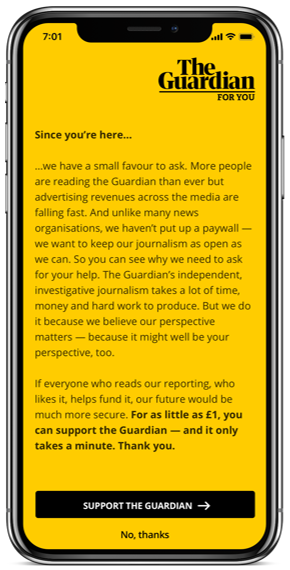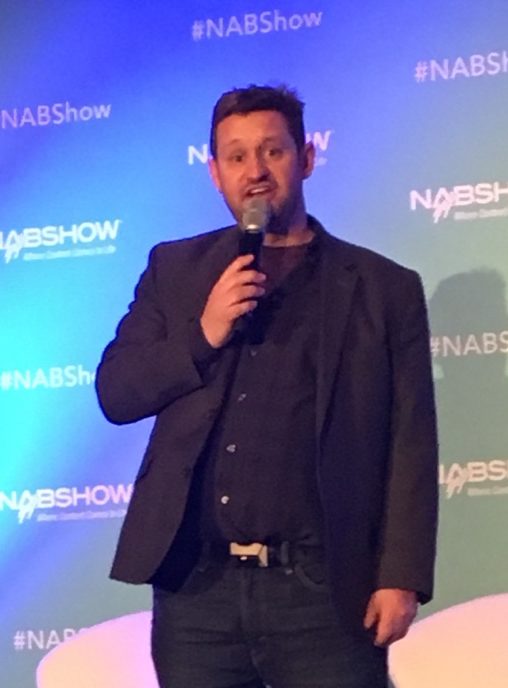
With apologies to Meghan Trainor, more and more media brands are rapidly coming to the realization that email database marketing is a key component to effectively engaging their audiences – listeners, viewership, or readership.
This is especially case as they confront the realities they’re facing during the ongoing COVID-19 nightmare. All this week, JacoBLOG is reviewing some of the basics – steps most radio stations can take to counter the effects of the virus.
Because of the increasingly challenging economic environment, marketing and promotion budgets (what was left of them) have been slashed across the board, leaving programmers, marketers, digital directors, and sales managers in a position of having to innovate their way out of this mess.
Email database marketing is another of the solutions already in place at many stations, but often greatly underutilized. I’ve been thinking a lot about this tool in recent weeks. As we discussed in yesterday’s post on focus group research, a strong database can be a difference-maker, in terms of engagement, listenership, and revenue generation – if managers take the time to put it to work.
If you’ve been a Jacobs client for one year or 20, you know we have consistently placed a high priority on email databases – for messaging, marketing, research, and as a sales tool.
Radio’s track record for databasing has been checkered. Some stations and the companies that own them have made it a point to invest in this tool, but many others have simply treated it as a marketing afterthought. Because we’re in touch with so many radio station databases when we launch our Techsurveys, we often come across databases that are treated like the runts of the marketing litter. Often, stations aren’t aware of the size or quality of their email address pools. And then there are stations that actually have clean, useful databases that are often ignored, underutilized, or implemented without a whole lot of strategic purpose.
Part of the root cause of why radio database marketing is lacking is because it often falls between the departmental cracks. Programmers tend to be removed from the database process, sellers have never understood their value to begin with, and digital staffers simply use them in a utilitarian fashion. Consequently, email communiques from stations to their very best customers tend to be cluttered, haphazard, poorly written, and lacking strategic purpose.
On the public radio side, it’s not much better. “Member databases” are just that – collections of people who have financially supported the enterprise. But few public stations make it a priority to grow their databases beyond that subgroup. And more often than not, these groupings of core fans go mostly under-used by stations, outside of pledge drives when it’s time to raise funds.
Especially during this period when budgets are slashed and consumers are nervous, having a robust, quality database needs to be part of a successful station’s strategic plan in order to provide value in engagement, research, programming, and sales, underwriting, and sponsorships.
Throughout most of June, Second Street Media – an audience engagement company – put on a virtual conference. And a number of sessions were  fascinating looks at how various media players are placing increased value on their email databases.
fascinating looks at how various media players are placing increased value on their email databases.
For Second Street, many of their clients are local TV stations and hometown newspapers – traditional media struggling to stay relevant in a digital ecosphere.
One of the things I learned from some of the sessions I watched is that when it comes to database building and marketing, radio tends to be ahead of other media. Many in the television and print world have only been prioritizing the aggregation of email addresses for a relatively short period of time.
But most are on it now, methodically building these valuable collection of consumers as quickly as possible. Many are moving at rapid speed to close the gap, create content whose main purpose is to add more user emails and other demographic info, while establishing better messaging with their audience and readership.
In the newspaper business, in particular, many for-profit newspapers are using database marketing to fundraise (think public radio and TV). The premise is that, for example, local COVID-19 coverage is expensive, requiring financial and journalistic resources. And struggling newspapers are now asking their readership for monetary contributions, above and beyond subscriptions.
 The Guardian has pursued this strategy, and now, many other newspapers are following suit. The “ask” appears after every story with the reminder that great journalism requires financial support. And since COVID-19, many newspapers here in the U.S. are on that parallel path to raise funds among local readers hungry for accurate, timely information about the pandemic and its impact on their communities.
The Guardian has pursued this strategy, and now, many other newspapers are following suit. The “ask” appears after every story with the reminder that great journalism requires financial support. And since COVID-19, many newspapers here in the U.S. are on that parallel path to raise funds among local readers hungry for accurate, timely information about the pandemic and its impact on their communities.
As they’re learning, these campaigns are especially effective when they utilize direct messaging to readers – and email databases are the perfect conduit. Of course, the bigger the “cume” – in this case, the size and scale of the database – the greater the chances some readers will make financial contributions just because they’re asked to do so. And that’s why more and more are now focused on growing that base.
Radio has always had a built-in edge in when it comes to growing their databases. For many radio brands, contesting has been an effective come-on to stimulate email signups. In public radio and Christian radio, fund drives and similar activities can power up a list.
As I saw again and again in these Second Street presentations, many non-radio media brands aren’t just in the process of building up their databases – they’re putting them to work for their sellers as well.
Once they’re in the database, readers, viewers, and yes, listeners can be utilized as a sales and marketing resource for advertisers. More information can be collected on their purchasing habits and intent to buy products and services today, and in the future.
As we’ve demonstrated with our COVID-19 studies, it is not a heavy lift to gauge their current  purchasing predilections by fielding short surveys that target specific product categories.
purchasing predilections by fielding short surveys that target specific product categories.
All of this leads to greater accountability, and ultimately, better results for clients. A well-groomed, smart managed database can provide greater ROI than can ROS schedules on the air or placement in the Sports Section.
If sales departments aren’t just focused on selling spot schedules, and instead, think of media campaigns as a client’s ability to “rent” a station’s marketing reach, targeting, personalities, on-location tools, and other services, the game changes in favor of both radio and its advertisers – especially during a period where more and more brands are deviating dollars away from Facebook and other web-based advertising engines.
Five years ago last month, we added Seth Resler to our team. When we gave him the bodacious title of Digital Dot Connector, it was his expertise in content  marketing that convinced us he was the right person for this new role at our company. Seth has created a suite of very useful tools available on our website.
marketing that convinced us he was the right person for this new role at our company. Seth has created a suite of very useful tools available on our website.
At Jacobs Media, when it comes to growing and strategically using email databases, we eat our own dog food. Since Seth joined the company, our email lists – generated by this blog and other content – have increased 8x – and they continue to grow.
Seth always has his “science experiments” brewing to expand our database’s size and usefulness. And we encourage him to try different things as we hack our way toward improving a tool I like to call “the gift that keeps on giving.”
In tomorrow’s final installment this week of our “2020 Halftime Show,” we’ll be looking at a fascinating extension of the database that puts a station’s most loyal fans to work, helping build the brand, spreading the word, and creating more audience engagement.
Yes, we’re talking about brand evangelists.
- What To Do If Your Radio Station Goes Through A Midlife Crisis - April 25, 2025
- A 2020 Lesson?It Could All Be Gone In A Flash - April 24, 2025
- How AI Can Give Radio Personalities More…PERSONALITY - April 23, 2025




Leave a Reply